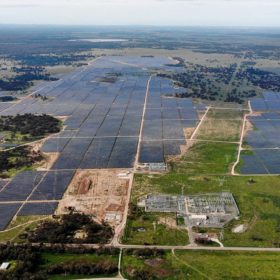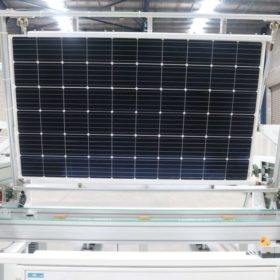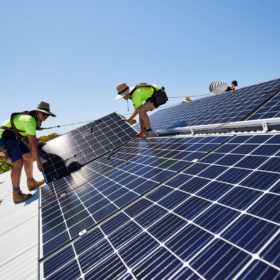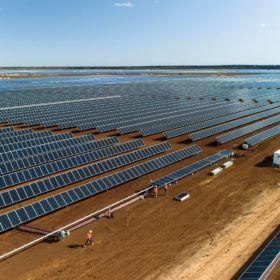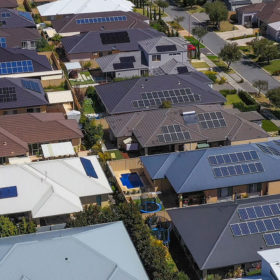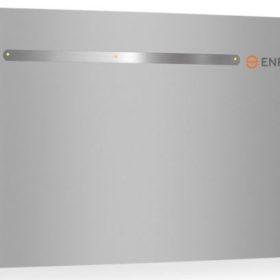CEC report reveals record year for renewables but new investment slows
Australia’s clean energy industry continued its record-breaking run in 2021 with the wind, solar PV and energy storage sectors steering renewables to an unprecedented 32.5% share of the electricity market but the Clean Energy Council has warned of clouds on the horizon with investment commitments in new large-scale projects slowing.
MSquare Energy’s solar modules de-listed by CEC
MSquare Energy’s ambition to become Australia’s largest solar PV panel manufacturer has been dealt a blow with the Clean Energy Council confirming it has delisted the Sydney-based outfit’s entire module range.
Bifacial solar modules with 30% transparency rate for agrivoltaics, carports launched
Slovenian solar manufacturer Bisol is offering its new product with outputs of 260 and 300W, respectively. Front efficiencies ranges from 13.5% to 14.0% and the temperature coefficient is -0.35% per degree Celsius.
Growatt unveils new inverter for residential applications
The new device has an efficiency of up to 98.6% and a European efficiency of up to 98.1%. It features up to two maximum power point tracking (MPPT) inputs, with MPPT voltage ranging from 140-1,000V. While the inverter is currently only available in China and Europe, the company said it plans to launch it in Australia “soon.”
What tomorrow’s SRES changes mean for Australia’s solar industry
On Friday, major changes to the regulatory framework surrounding the small-scale renewable energy scheme (SRES), effectively the country’s solar rebate program, will come into force. Pv magazine Australia spoke to Smart Energy Council CEO John Grimes about the changes and how they will impact Australia’s solar players.
Chinchilla battery to charge up Queensland’s renewable energy revolution
Queensland government-owned utility CS Energy has announced plans to build a 100MW/200MWh battery near Chinchilla on the Western Downs with the state government identifying large-scale energy storage as fundamental in the state’s energy transition.
Retail giants unite to secure renewable power deal with CleanCo
Retail giants Kmart, Bunnings, Target and Officeworks have signed a long-term power purchase agreement with Queensland government-owned generator CleanCo to provide the retailers with 100% renewable electricity at their sites across the state.
Australia leads world as solar sets global generation record
A new report published by U.K.-based energy think tank Ember shows that solar PV was the world’s fastest rising source of electricity generation in 2021 and Australia leads the world in its uptake with solar generating 12% of the nation’s electricity last year.
Enphase launches pilot to pay US solar customers for leasing batteries, sharing energy
Homeowners who participate in a new Enphase pilot project will connect their home batteries to the US grid, sharing energy through Green Mountain Power’s distribution system in exchange for financial incentives.
World will need 5.2TW of solar this decade to avoid climate breakdown
The International Renewable Energy Agency’s latest global outlook has spelled out just how ‘woefully’ far the world is from capping temperature rises at 1.5C, and lamented: ‘The stimulus and recovery efforts associated with the pandemic have also proved a missed opportunity.’
